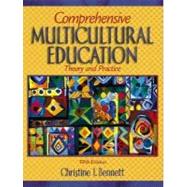
Every chapter concludes with “Notes.” Most chapters conclude with “Conclusions,” Compare and Contrast,” “Activities and Questions,” and “Selected Sources for Further Study.”
Preface.
I. The Case for Multicultural Education A Conceptual Framework for Multicultural Education.
The Case of Fred Young.
The Case of Sarah Stein.
The Case of Jimmy Miller.
The Case of Isaac Washington.
The Case of Marcia Patton.
The Case of Jeszs Martinez.
The Case of Sam Johnson.
Overview.
1. Multicultural Schools: What, Why, and How.
What Is Multicultural Education?
Core Values in Multicultural Education.
Why Is Multicultural Education Essential?
The Need for Academic Excellence and Equity.
The Existence of a Multiethnic Society.
The Existence of an Interconnected World.
Equity and Democratic Values.
Conditions for Multicultural Schools.
The Example of Effective School Desegregation in Urban Settings.
How the Host School Responds.
Multicultural School Conditions.
Positive Teacher Expectations.
A Learning Environment That Supports Positive Interracial Contact.
A Multicultural Curriculum.
2. The Nature of Culture and the Contexts for Multicultural Teaching.
What Is Culture?
The Importance of a World View.
High- and Low-Context Cultures.
Differences Between Culture and Race.
What Do We Mean by Ethnic Groups?
Diversity Within Ethnic Groups.
When Is an Ethnic Group a Minority Group?
Cultural Assimilation and Cultural Pluralism.
Guidelines for Understanding Cultural Differences in the Classroom: Aspects of Ethnicity.
Verbal Communication.
Nonverbal Communication.
Orientation Modes.
Social Values.
Intellectual Modes.
3. Race Relations and the Nature of Prejudice.
The Prevalence of Prejudice and Racism.
The Nature of Prejudice.
The Nature of Racism.
Distinguishing Individual, Institutional, and Cultural Racism.
Theories of Ethnic Identity.
“The Negro-to-Black Conversion Experience.”
The Banks Typology of Ethnic Identity Development.
White Racial Identity Development.
The Nature of Stereotypes and Multicultural Teaching.
An Illustration of Racism and the Need for Curriculum Reform.
Africa: Common Misconceptions.
Some Effects of Misconceptions About Africa.
4. Conflicting Themes of Assimilation and Pluralism Among European Americans, Jewish, and African Americans.
Sources of Cultural Diversity in the United States: An Overview.
European Americans.
Origins: The Roots of Diversity and Community.
Assimilation in the Face of Prejudice and Discrimination.
Jewish Americans.
Origins: Roots of Diversity and Community.
Accommodation in the Face of Anti-Semitism.
African Americans.
Opposition and Liberation Amidst the Legacy of Slavery.
Who Has Assimilated?
5. Conflicting Themes of Assimilation and Pluralism Among American Indians, Latinos, Asians, Muslims, and Arabs in the United States.
American Indians.
Origins: Roots of Diversity Within the Native American Community.
Conflict, Accommodation, and the Legacy of Genocide.
Latinos.
Origins: Roots of Diversity and Community.
Accommodation and the Legacy of Colonialism.
Asian Americans.
Origins: Roots of Diversity and Community.
Accommodation in the Face of Prejudice and Discrimination.
Muslims in America and Arab Americans by Salman H. Al-Ani.
Muslims in the United States.
Community and Diversity: Immigrant and Indigenous Origins.
African American Muslims.
Muslim Concerns.
Arab Americans.
II. Individual Differences That Affect Teaching and Learning.
Warren Benson's Classroom.
The Case of Kevin Armstrong.
The Case of Rachael Jones.
The Case of Max Britten.
The Case of Maria Chacsn.
6. Learning Styles: Interactions Between Culture and the Individual.
An Introduction to Learning Style.
What Is Learning Style?
Why Be Concerned About Learning Styles.
Four Strategies for Discovering Learning Styles.
Field Independence-Dependence.
Students' Need for Structure.
Perceptual Modalities.
Learning Style Inventory.
Relationships Between Culture and Learning Style.
Learning Styles and Teaching Styles.
Learning Styles and Effective Teaching.
7. Beyond Learning Style: An Overview of Other Key Individual Differences.
Learning Skills.
Levels of Achievement and Aptitudes.
Motivation.
Self-Concept.
Gender.
Special Interests.
Exceptionalities.
Physical Characteristics.
Peer Relations.
Family Conditions.
Beliefs, Attitudes, and Values.
Sense of Ethnic Identity.
Teacher Perceptions of Individual Differences Related to Ethnicity and Poverty.
Failure, the Deficit Argument.
Failure, the Difference Argument.
8. Teaching Concepts and Strategies: The Development of Positive Classroom Climates.
The Empowering Nature of Respect.
The Promise of Culturally Relevant Teaching.
Principles of Culturally Relevant Teaching.
Examples of Culturally Relevant Teaching.
Funds of Knowledge Research and Teaching.
Individualizing Instruction: A Response To Cultural and Individual Differences.
The Basics of Mastery Learning.
Experiential Learning.
Bilingual Education.
The Theory of Multiple Intelligences.
Cooperative Learning: Student Team Learning.
III. Strengthening Multicultural Perspectives in Curriculum and Instruction.
The Case of Lisa Stuart.
Sam Johnson's Classroom Revisited.
Integrating Global and Multicultural Perspectives.
9. Multicultural Curriculum Development: A Decision-Making Model and Lesson Plans.
Introductions: Getting Started.
Developing a Course Rationale.
Developing Plans for Instruction.
The Importance of Fair-Minded Critical Thinking.
The Curriculum Model: Goals, Assumptions, and Content.
Goal One: Understanding Multiple Historical Perspectives.
Lesson Plans That Develop Multiple Historical Perspectives.
Index.
Appendix.
Sample Multicultural Teaching Competencies/Standards.
Multicultural Self-Report Inventory.
Kofi Annan's Astonishing Facts!
Sample Job Interview.
The New copy of this book will include any supplemental materials advertised. Please check the title of the book to determine if it should include any access cards, study guides, lab manuals, CDs, etc.
The Used, Rental and eBook copies of this book are not guaranteed to include any supplemental materials. Typically, only the book itself is included. This is true even if the title states it includes any access cards, study guides, lab manuals, CDs, etc.